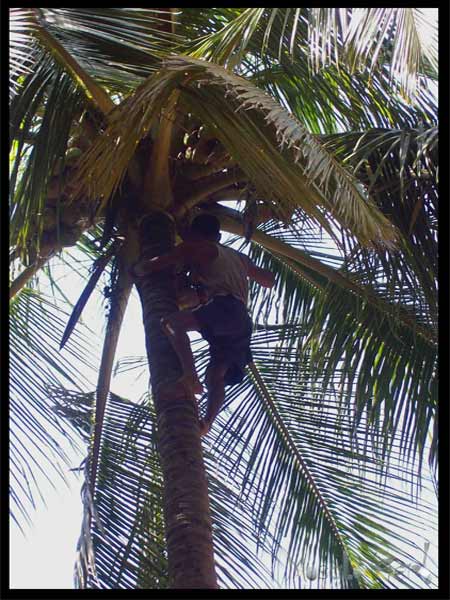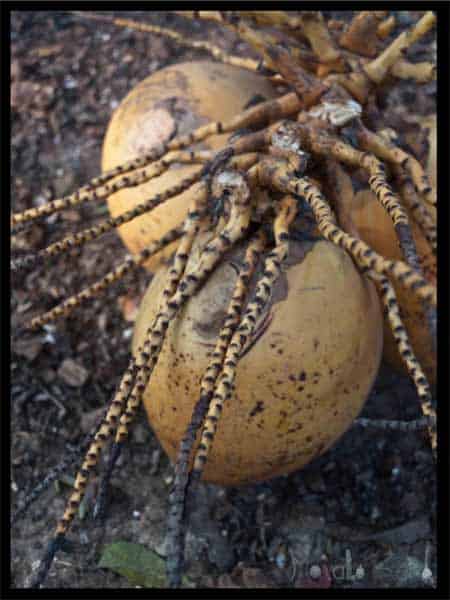
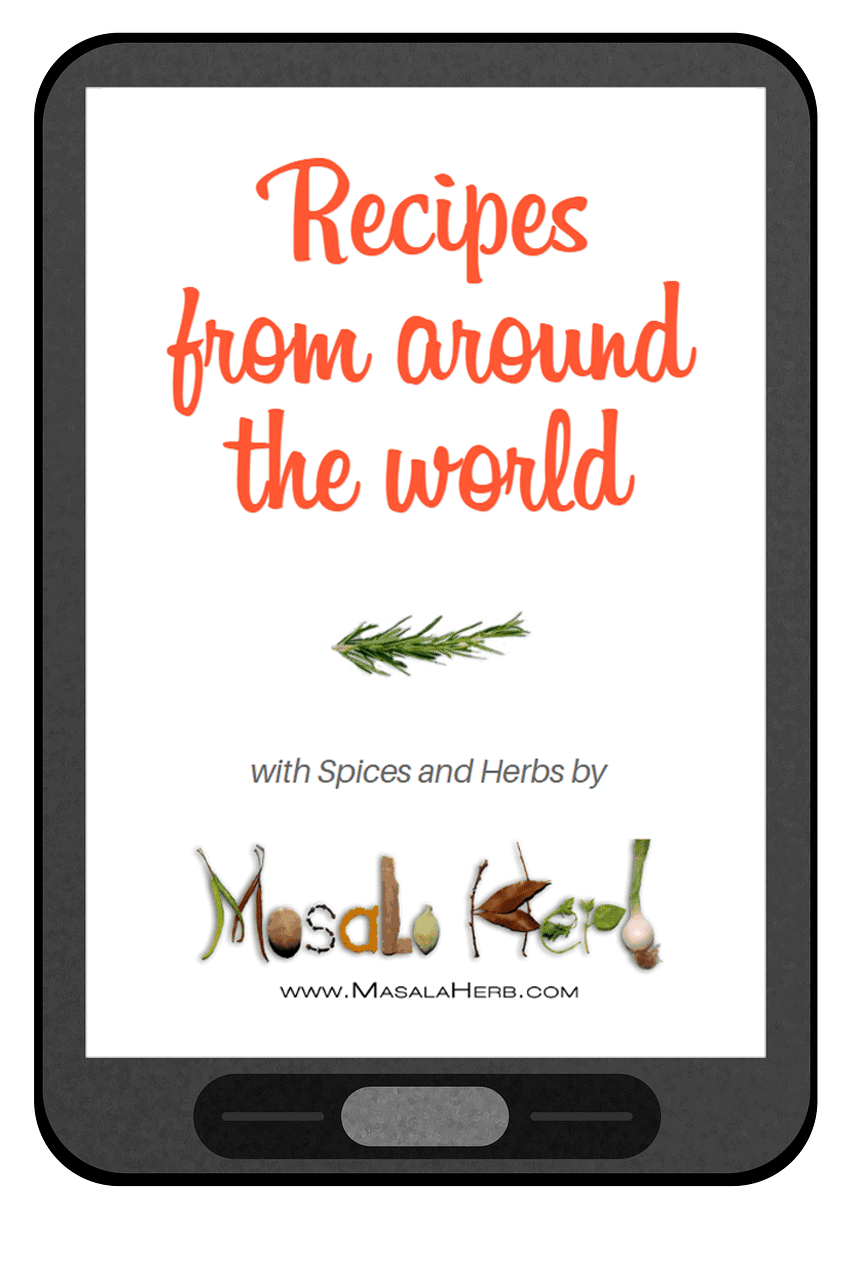
Global Food Recipes
with Spices and Herbs
Free E-Book available for a limited time. Grab yours now and get instantly inspired!
You missed out!
Jump to:
I have always been obsessed about coconut.
It might be the taste of the white flesh, the unique coconut water or the fact that u have to crack it open so that you can get to the treasure inside.
It was so special because coconut is a fruit which was rarely sold before in Europe.
Surely you would come across some scraped dry coconut in a plastic packet but you would have to search for a round unopened fruit itself.
They did start years later to sell it more in the surroundings but it was sometimes simply overpriced and unaffordable.
Of course they were never fresh, even though we used to think they were fresh enough, but in fact they were far away of being perfect!
We had visited once a caribbean island called Guadeloupe and I remember drinking coconuts but not eating the flesh.
Maybe my memory is fading but I am sure that I had not missed something.
Being a huge coconut fan I should have known which of those exotic fruits were actually meant to be eaten.
You must be thinking that girl has gone nuts, but I ll explain you what I mean with "the right" edible coconut.
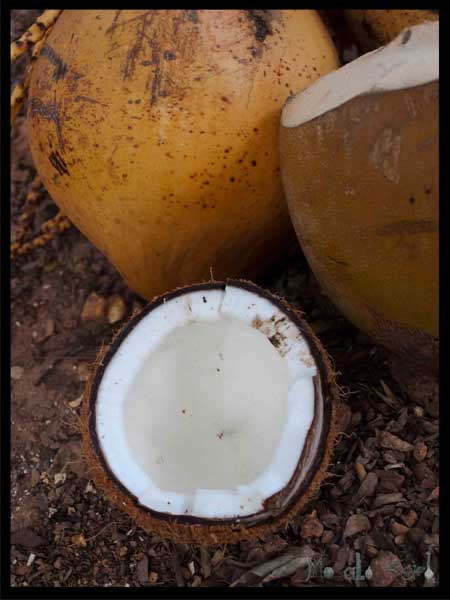
You all know what it looks like, right?
Outside harry, inside white flesh containing delicious refreshing coconut water.
The harry part is actually a inside layer of the whole fruit, it is further covered with a woody thick layer which is growing on the top part of the palm tree.
You peel that woody layer only if you want to scrape the inside flesh, usually you don't take the trouble to remove that layer.
There are a numerous types of coconuts in the whole world so they might differ to the ones in my pictures.
We in Goa have mostly 2 types the green ones and the yellow/orangey ones which they call kerala coconuts.
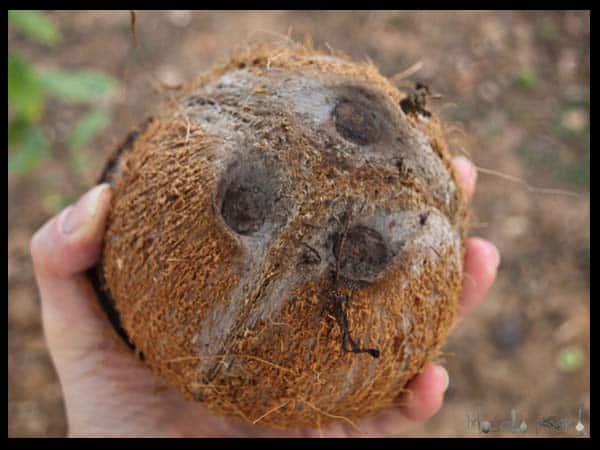
Being in Goa I have seen a bunch of coconuts and for some time I was just eating that, especially in the month of summer when it is scoring hot and your system is just boiling, that's when you enjoy some simple fruits and the coconut even provides liquid to drink.
My husband taught me some few things, first of all how to cut and open them, secondly which one to eat.
The ones which are suppose to be eaten are the young coconuts, the so called tender coconuts.
With tender is meant the flesh, a jelly like transparent thin layer. Locals never eat the hard flesh how we do in Europe.
They mostly reserve those for curries, sometimes for sweets and to dry them in the sun to press coconut oil of the dried flesh.
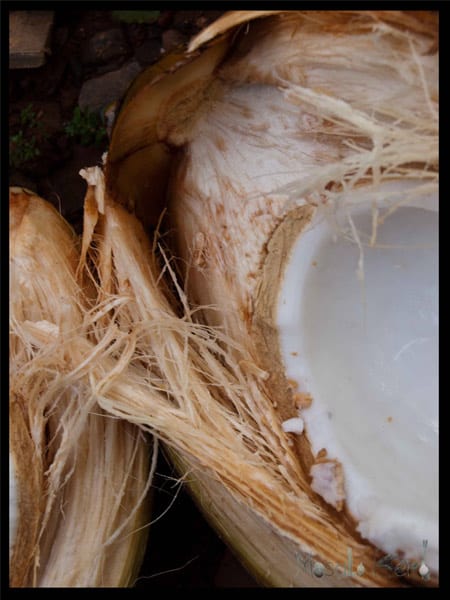
Tender coconut is seen here as the more healthier variation compared to the dry hard ones.
It is best enjoyed right after harvesting from the palm trees and it cant be kept for too long either.
For those who live in non tropical climates the next best thing are the hard fleshed coconuts.
Sometimes we don't have a choice, right?
The coconut water is revitalizing, refreshing your body instantly.
My husband swears it gives him a boost when drinking before workout.
For more nutritional values check out this page, you can compare dried and young coconuts nutritional values for your health.
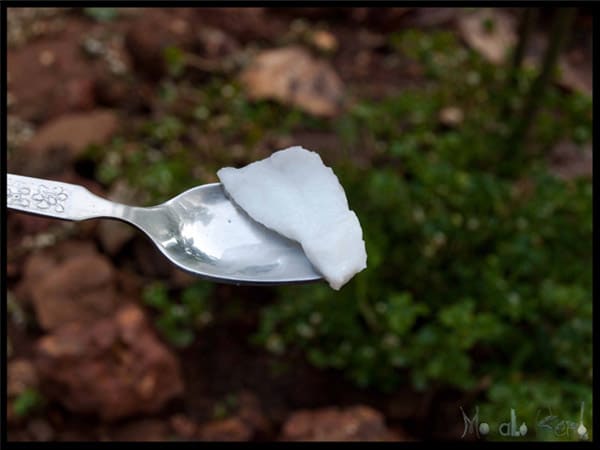
Locals enjoy the coconut flesh, water and oil for various reasons, it cools the body and revitalizes, it is anti bacterial and anti fungal fighting off infections, it boosts the metabolism helping you to loose weight, it has anti cancer properties, it cures malnourishment, it is promoting digestion and it cleans the urinary path.
The amount of benefits are incredible and it shows how much value it has.
Coconut water can be fermented to produce coconut vinegar, which is one of my favourite type of vinegar for cooking.
Coconut oil is used for cooking but in India it is commonly used to nourish the hair scalp too.
I started to apply it every week twice 1 hour before washing the hair and it really helped my hair to grow thicker and healthier ( I know it has nothing to do with food but its a useful tip).
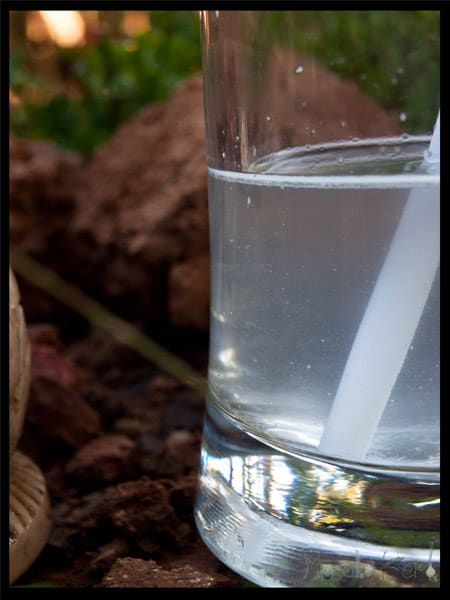
There is further Sweet Toddy sap (Palm Nectar) which is extracted from the palm flower twice a day.
That can be boiled further to produce Coconut Jaggery (natural coconut sugar) or they leave the toddy to ferment which produces palm wine.
Further distillation produces Coconut Fenni, which is a known alcoholic local drink in Goa.
The heart of the palm is edible too but I have never tasted it, harvesting the buds kills the plant so its more of a rare delicacy.
Nothing goes to waste, a coconut tree is fully used.
The leaves, the wood, the roots,... its the most important tree growing in the tropics for locals.
Not anybody can just climb a coconut tree, there is a special profession called coconut plucker which is not a common job anymore.
The value of coconuts has risen too over the past years since constructions in goa are on the rise and forests are cut.
Lets just hope they don't cut them all off!
